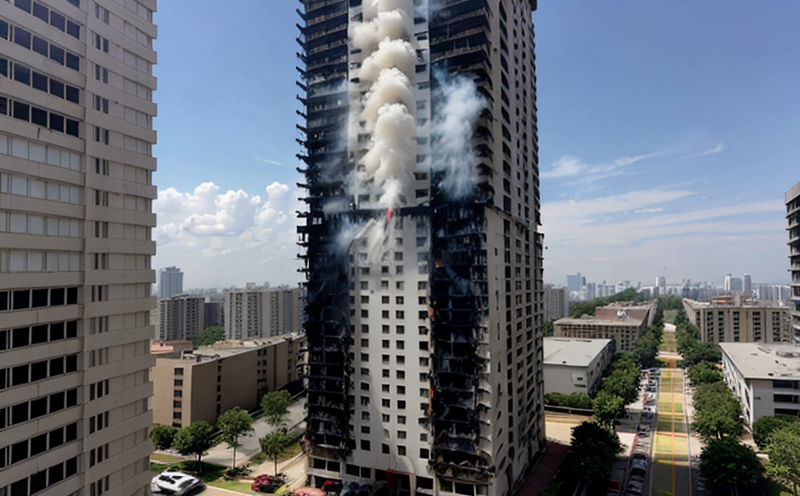High-rise building fire safety inspection
In high-rise buildings, ensuring compliance with stringent fire safety regulations is paramount. The inspection process involves a detailed review of various systems and components to ensure they are up-to-date, functional, and meet international standards. This service provides comprehensive analysis of installed fire protection systems including sprinkler systems, fire alarms, extinguishers, and emergency lighting.
The primary goal is not only to identify any potential hazards but also to recommend improvements based on findings. Compliance with local codes such as NFPA 13, NFPA 72, and ASHRAE can significantly reduce risks associated with fires in high-rise buildings by ensuring that all fire protection systems are properly maintained.
Our team of experts uses advanced diagnostic tools to assess the performance of each system under simulated conditions. This allows us to pinpoint issues early before they become critical problems, thereby minimizing disruption and cost during maintenance periods. By leveraging state-of-the-art technology and methodologies, our inspections offer an in-depth evaluation of your building's fire safety infrastructure.
One crucial aspect of this inspection is the testing of sprinkler systems. We conduct hydrostatic tests on all wet pipe systems at specified intervals to ensure that they are capable of delivering water within required timeframes. Similarly, we test automatic fire alarms for proper operation and signal clarity using smoke simulation chambers.
For extinguishers, we check their pressure gauge readings against manufacturer specifications, inspect nozzles for obstructions, and verify that all units are accessible according to building codes. Emergency lighting fixtures receive close scrutiny as well; they must be capable of illuminating corridors, stairwells, and other escape routes reliably during power outages.
The inspection process also includes evaluating the integrity of fire doors and windows which play a vital role in containing fires within specific areas of the building. We measure their insulation properties using thermal imaging cameras to ensure they maintain adequate temperature differentials between compartments.
| Standard | Description |
|---|---|
| NFPA 13 | Standard for the Installation of Sprinkler Systems. |
| NFPA 72 | Standard for the Installation of Fire Alarm Systems. |
| ASHRAE | Guidelines for the Design and Maintenance of High-Rise Buildings. |
Applied Standards
The inspection process strictly adheres to several key standards that are essential in ensuring high levels of fire safety. These include NFPA 13, which sets forth guidelines for the proper installation and maintenance of sprinkler systems; NFPA 72, which provides requirements for fire alarm systems including design, installation, testing, and maintenance procedures; and ASHRAE (American Society of Heating, Refrigerating & Air-Conditioning Engineers) standards that govern HVAC systems in tall buildings.
| Application | Description |
|---|---|
| Data Centers | Ensuring that critical infrastructure remains operational even during emergencies. |
| Hospitals | Maintaining patient safety and preventing fires from spreading to treatment areas. |
| Offices | Protecting valuable assets and ensuring the well-being of employees during evacuations. |
Customer Impact and Satisfaction
- Enhanced peace of mind knowing that your property meets all relevant regulations.
- Identification of areas needing improvement before they escalate into major issues.
- Avoidance of costly fines for non-compliance with local fire codes and standards.
- Improved reputation through adherence to best practices in fire safety management.





